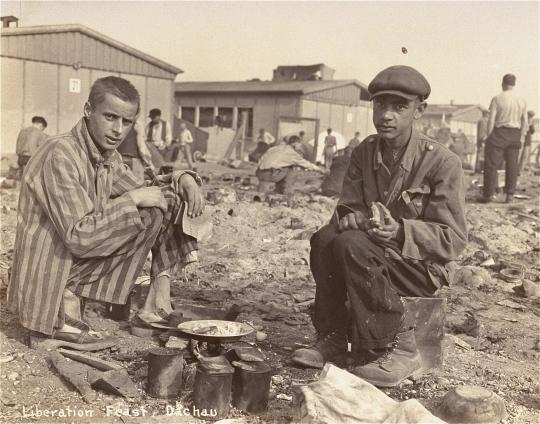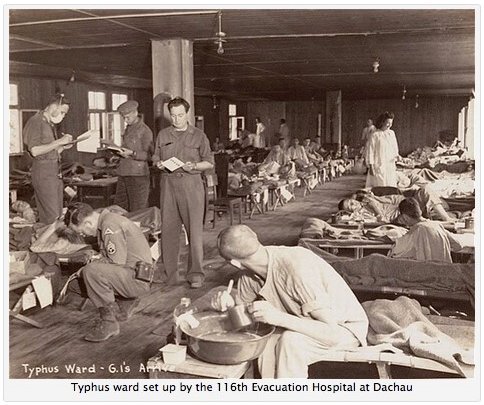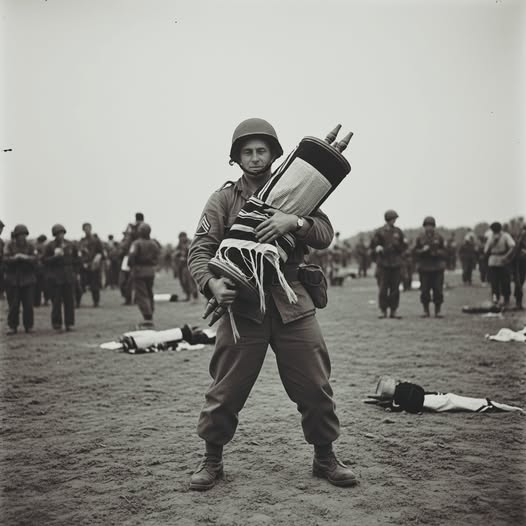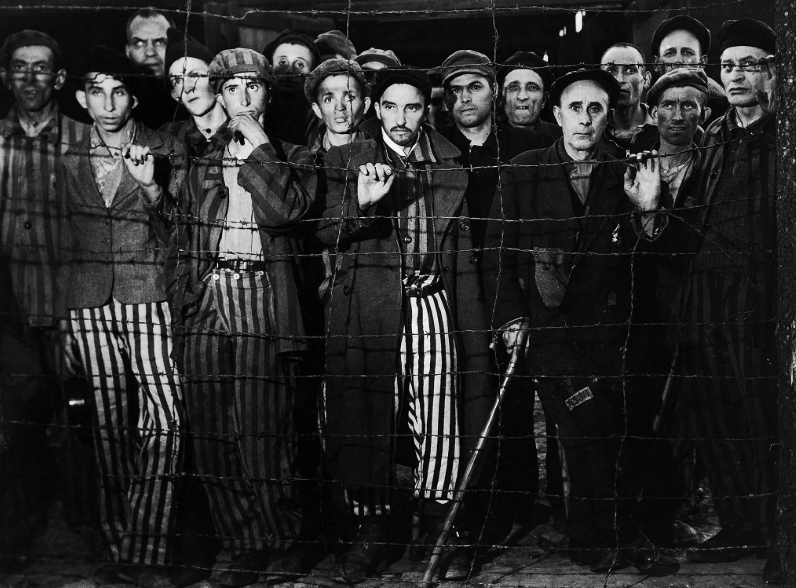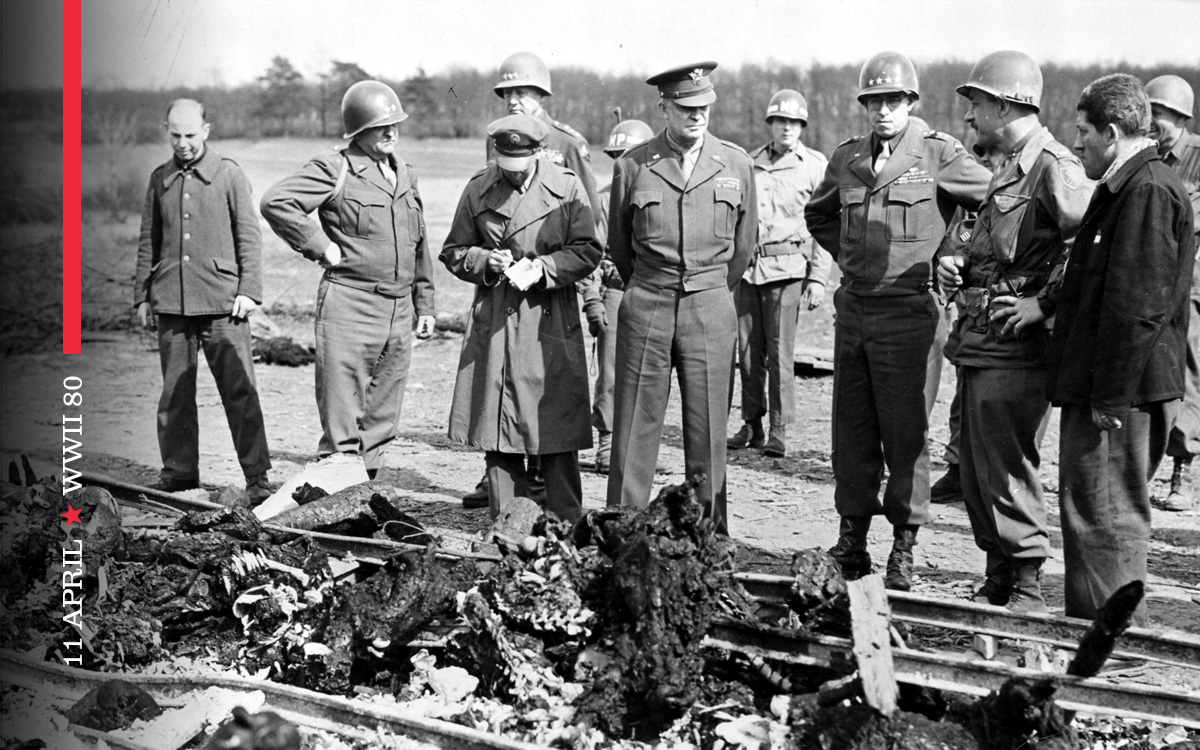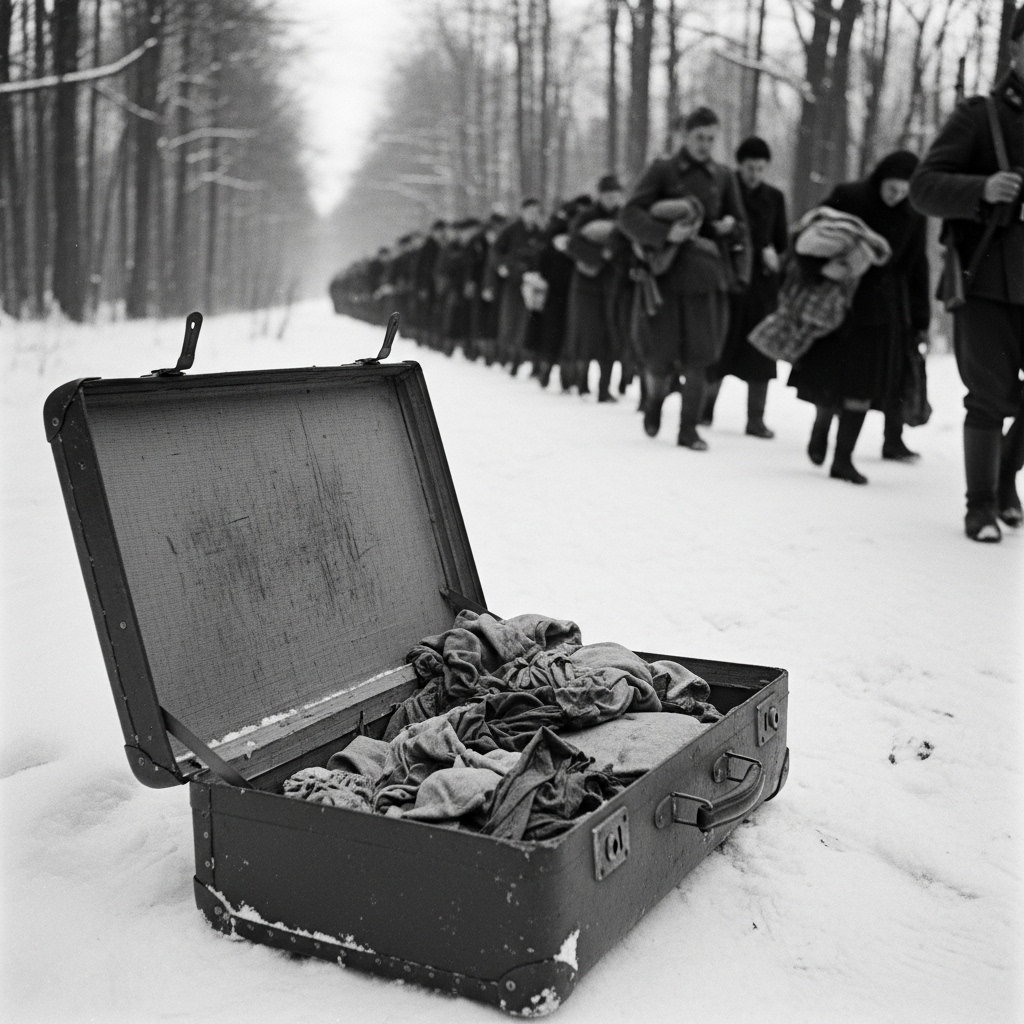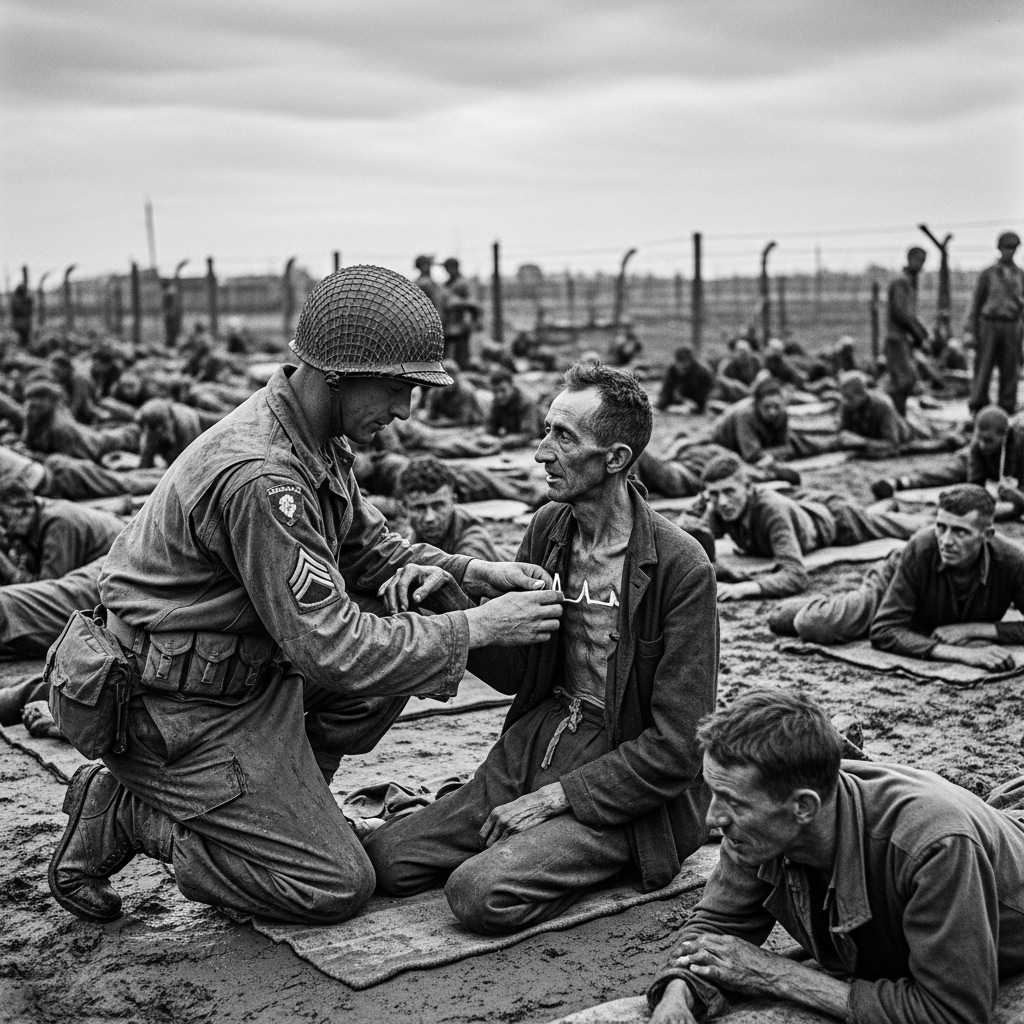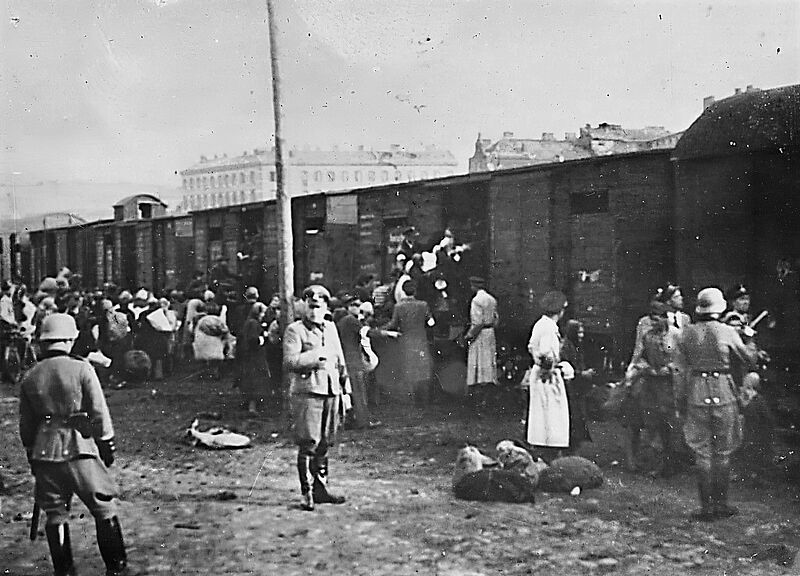The Nurse’s Candle — Dachau, 1945
The liberation of Dachau was not marked by trumpets or fanfare. It was not a parade of victory nor a celebration of conquest. It was silence broken by whispers, trembling breaths, and the faint rustle of skeletal men shifting in their bunks, their eyes adjusting to a light they no longer believed in. Among those emaciated figures—shadows of humanity suspended between life and death—stood an American nurse, her hands trembling not from fear but from the unbearable weight of compassion. In her palm, a single candle flickered.
The barracks smelled of damp wood, sickness, and despair. Rows of hollowed men lay on wooden planks, their bodies wasted, their eyes pools of memories too cruel to be spoken aloud. The war had stripped them of everything—family, dignity, even the strength to rise. Yet when the flame touched the stale air of that room, a fragile hush settled, as though the men feared the candle might vanish like every other comfort stolen from them.
One survivor, his lips cracked and voice barely more than a breath, whispered words that seemed to pierce through the nurse’s soul: “It is the first light I have seen that wasn’t fire.”
Fire. For years, fire had meant crematoria, villages burning, transports vanishing into smoke. Fire had been destruction, not warmth. And now, this fragile flame—held steady by the nurse’s trembling hand—was more than light. It was defiance. It was testimony. It was a declaration that not all fires consume; some, astonishingly, can heal.
The nurse remained through the night. She did not leave when the others left to rest, nor when the weight of exhaustion pressed down on her shoulders. She stayed, sitting on the rough boards beside each bed, lighting a small candle for every man who still had breath. She knew that her medicines were limited, that rations were scarce, and that she could not undo the years of torment etched into their frail bodies. But she understood something deeper: the human soul, fractured though it may be, still craves recognition.
She sang lullabies from her childhood, words these men could not understand yet somehow recognized, because music had no borders, no language except comfort. She whispered promises not of heaven, not of miracles, but of presence: “You are not alone anymore.”
Some wept silently, tears carving lines through the dirt on their faces. Others, too weak to cry, simply closed their eyes, letting her voice carry them away from the screams that had haunted their nights. For them, the nurse’s candle was not simply wax and flame—it was the first symbol of human kindness they had witnessed in years.
The story of Dachau is written in numbers and shadows: thirty thousand prisoners liberated, thousands dead even in those final days, a legacy of horror. But history often forgets the moments that cannot be measured. History forgets the quiet acts of defiance, the way a single nurse chose to fight despair with tenderness.
In that barrack, she was not a soldier. She was not armed with rifles or steel. She was armed with gentleness, and in the ruins of a world consumed by cruelty, that was enough to wage war against hopelessness. Her candlelight did not chase away all darkness—it never could—but it created pockets of warmth in which men remembered they were still alive.
For decades, Holocaust survivor stories have centered on numbers, statistics, the scale of tragedy. Yet it is in these small gestures—the clasp of a hand, the flicker of a candle—that humanity reveals its greatest power. The liberation of Dachau was not only the defeat of tyranny; it was also the rediscovery of compassion in a place designed to erase it.
Years later, one of the survivors, now an old man with grandchildren, recalled that night. “I had forgotten what it felt like to be touched with kindness,” he said. “That nurse’s candle—it was the first time I believed I could live again.”
For him, survival was not only the absence of death, but the presence of care. That flame lit more than a barracks; it lit the fragile path back to life. And in that way, the nurse became part of their healing journey, not through medical charts or injections, but through an act so simple it seemed almost foolish—sitting beside the dying and declaring that they still mattered.
The Holocaust was a machinery of dehumanization. It sought to strip men and women of identity, memory, even their names, reducing them to numbers tattooed on their flesh. Yet in Dachau, 1945, one nurse reminded them of what no oppressor could erase: their humanity. That reminder did not end the pain, nor did it undo the trauma. But it planted a seed of resilience, a fragile hope that even in the ashes of horror, compassion could survive.
For those who walked out of Dachau alive, life was not a triumphant return but a stumbling rebirth. They carried wounds too deep for words, memories that scarred every attempt at joy. Yet in their testimonies, when they spoke of liberation, many did not speak first of soldiers or battles—they spoke of her candle. They spoke of that night when a stranger’s presence became the axis upon which despair turned, however slightly, toward hope.
In today’s world, when the phrase Holocaust survivor stories is searched and retold, it often risks becoming abstract—a chapter in history books, a lecture in classrooms. But to imagine that room, to see the skeletal bodies lined in silence, to hear the voice whisper, “It is the first light I have seen that wasn’t fire,” is to step closer to the truth. Dachau was not simply a place of death. It was a place where the smallest act of compassion could stand as an act of rebellion against annihilation.
The nurse did not know if the men would survive the night. Many did not. Yet she lit a candle for each of them anyway. Because sometimes hope is not about certainty—it is about presence. It is about saying, “You are not forgotten. You are not just a number. You are still human, and you are not alone.”
The candle’s flame has long since burned out. The nurse herself, like the men she comforted, has passed into memory. Yet her story endures. In museums, in whispered recollections, in the legacy of Holocaust remembrance, her small act stands alongside monuments and memorials. Because it teaches us something monuments cannot: that history is not only about what was destroyed, but also about what survived.
And what survived in that barrack, on that night in 1945, was not only the lives of a few men—it was the idea that compassion, however fragile, can endure even in the face of absolute darkness.
Today, when we light candles in remembrance of the Holocaust, we are not merely mourning the millions lost. We are also carrying forward the flame of that nurse’s candle in Dachau. We are remembering that in humanity’s darkest hour, a single act of compassion could pierce the night.
In a world still scarred by conflict, oppression, and indifference, the story of the nurse’s candle is more than history—it is a warning, and a promise. A warning of how far cruelty can go when unchecked, but also a promise that kindness, however small, can still save souls.
The liberation of Dachau reminds us: victory is not only the fall of tyrants. It is also the rising of a hand in comfort, the flicker of a flame against despair. And for those who witnessed it, that light has never gone out.
Note: Some content was generated using AI tools (ChatGPT) and edited by the author for creativity and suitability for historical illustration purposes.


